Air or Water Cooling? What's best?
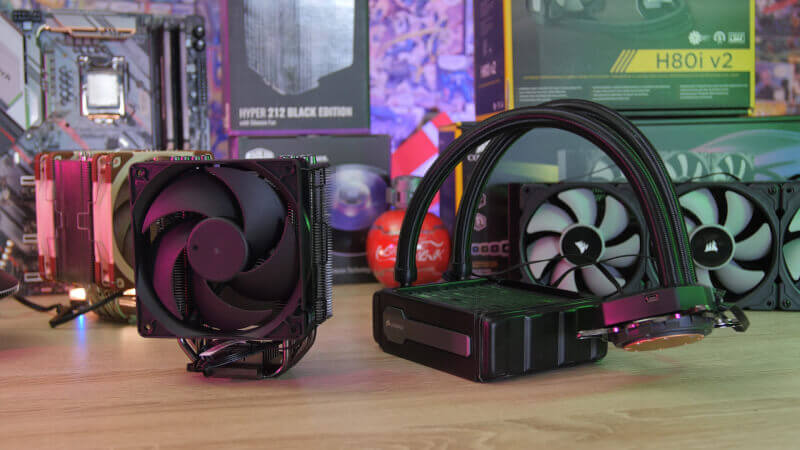
One of the things that you’re bound to be faced with when working with a new build is the question of the cooling solution. Should you stick to air cooling, and maybe even settle with the stock cooler that is bundled with many CPUs, or should you instead go with one of the closed water cooling solutions (AIO) that have flooded the market (pun intended) and gained a lot in popularity in recent years and can now be found in a variety of versions.
Today, we’ll be taking a closer look at the pros and cons of each cooling method, and we’ll possibly answer some of the questions that you might have when trying to decide between the two. We’ve tested on a couple of different models from each side in order to have some conclusive data to base our evaluation on.
Before we get any further, it’s important to stress that none of these cooling methods are by default better than the other. Both good and bad products can be found on each side of the fence, and there’s plenty of cases where an AIO cooler will be performing worse than an air cooler, and vice versa.
So, today’s test is not an all-encompassing review and benchmark of a wide range of cooling solutions in order to reveal the ultimate CPU cooler. What constitutes the best cooling solution varies a lot depending on your exact use case. What we want to go over in this article are the pros and cons of either approach to cooling.
Check out our video on this subject on our YouTube channel or keep reading.
1. Maintenance
In order to get the most out of you hardware, in terms of performance, it’s important to do some occasional maintenance. In this regard, dust is one of the greatest culprits, and this applies to both air and water cooling.
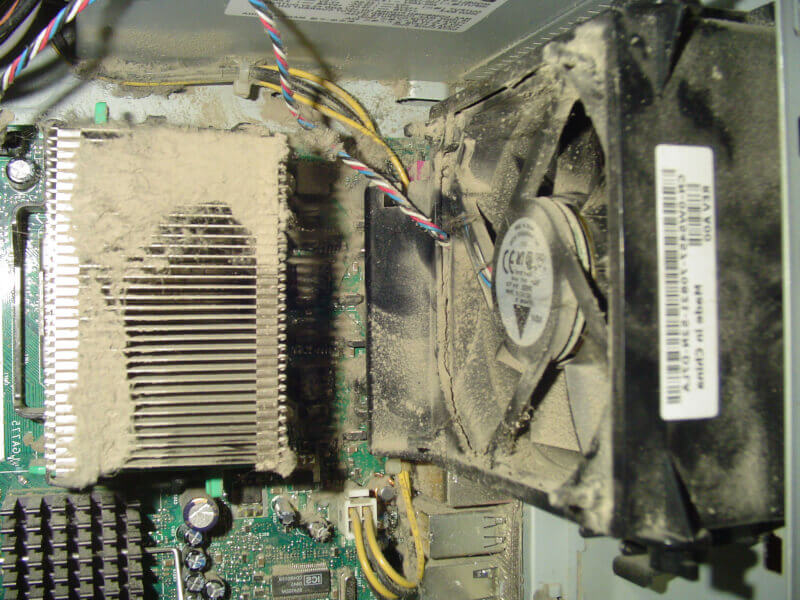
The advantage with air cooling is that it is easier to clean the dust from the parts since both the heat sink and the fans usually are placed in the middle of the case, and as such are easily accessible. How easy the fans are to remove varies from case to case (pun also intended), but in most cases it can be done without the use of tools.
When dealing with AIOs, it can be quite a bit more cumbersome to perform cleaning duty. In part because the fans are mounted to the case and maybe even hidden behind panels that make them even more inaccessible. Another downside is that the dust can settle between the fans and the radiator, and in order to clean it, you have to take it all apart. This requires the use of a screwdriver in order to proceed.
In both cases, the need of thorough maintenance is reduced if you have a case with decent dust filters. Still, in the majority of cases, an air cooler will be easier to maintain, which means that they take the victory in this category.
2. Durability
It can be hard to make any general observations or conclusions in terms of the durability of either solution since there can be a significant gap in quality between the cheapest and most expensive alternative within each method. However, there are some things that are worth keeping in mind.
An AIO solution usually has more mechanical parts that all need to function properly for the system to work. The same doesn’t quite apply to air coolers. Here, the fans are quite frankly the only component that can break. If you are unlucky and one or more fans were to stop working, it should be easy to detect and subsequently replace them.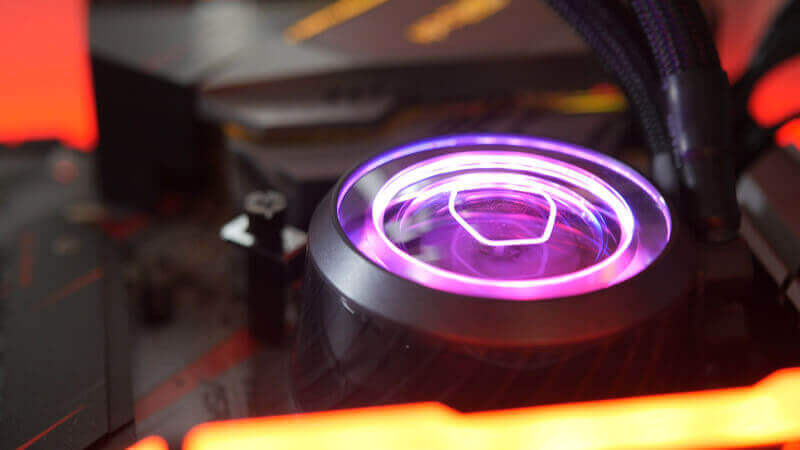
With an AIO, there are several things that can break, including the fans, of course. If, for instance, the pump dies, it can be difficult to detect, and there’s not much that can be done once you do. This means that you’ll have to replace the whole thing with a new cooler.
Also, the radiator itself and the lubricant can be the cause of trouble over the course of time. There have been plenty of reports of leakages or blockages occurring in closed AIO systems. In the worst case, this could lead to even bigger issues, if the lubricant finds its way into the rest of the system, thereby causing short circuits and other damages.
Since most AIO systems are not designed to be serviced by the consumer, it can be difficult to resolve such issues.
So, in terms of durability, it seems like a second victory to air cooling given the larger variety of failure points of the AIO solution.
3. Design
Design is obviously a subjective thing, and there’s a big difference in what people like. There’s an abundance of different options on the market to suit every preference, taste and style.
If you move into high end cooling, there’s no way around the fact that an air cooler will end up occupying a lot of space in order to be efficient enough to transfer the heat. This, of course, introduces some limitations as to the interior layout of the case. In particular in relation to memory modules that have to support the large size of the cooler element.
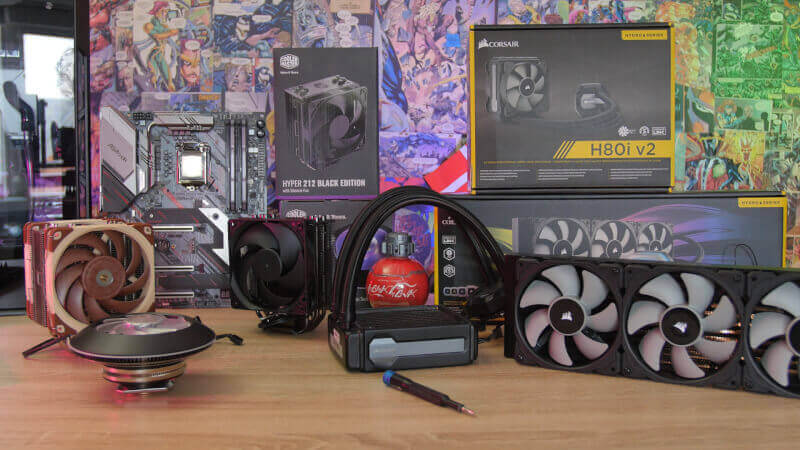
This is when the AIO solution really shines since the pump head is significantly smaller and the actual heat transfer takes place at the radiator, which can be placed in various locations, depending on your particular case. This gives you a lot of flexibility.
This makes it a lot easier to obtain a clean and stylish look, where the memory modules and motherboard can be seen, and aren’t hidden away underneath a massive cooler.
4. Cooling Performance
Within each cooling solutions we find that the performance varies a lot. Often, you get what you pay for. However, since we wanted to give you some relatable numbers to consider, we’ve added a selection of both air and water coolers at various price points. They have all been thrown through a stress test in order to produce some comparable results.
In terms of air coolers, we’ve tested three products in total.
The first one is a cheaper one, but still a classic. It’s the Cooler Master Hyper 212. This is the new Black Edition, which comes in at a price point of $39.
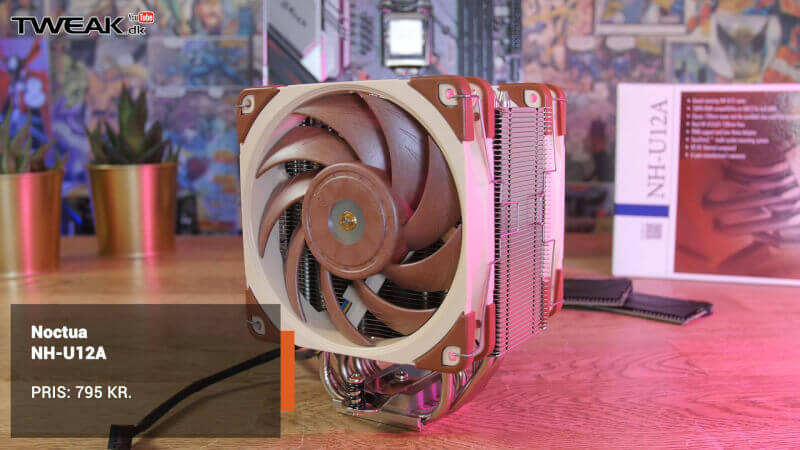
For the high end segment, we find yet another classic. It’s the Noctua NH-U12A, which might not win any prizes in terms of sexiness, but it is still widely held as one of the best air coolers available. It comes in at a price point of $99.
As a wildcard alternative, that we decided to add to this test, we find the low-profile Cooler Master G100M. It also has an MSRP of $39.
In terms of water coolers, we’ve also tested three products in total.
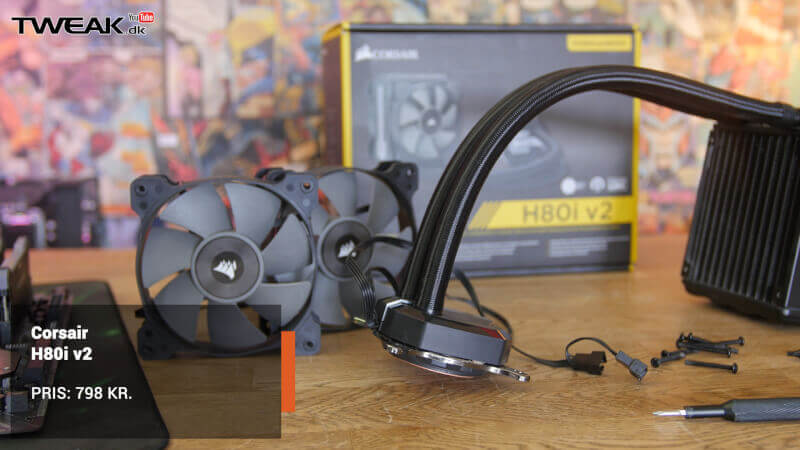
In the lower end, we find the Corsair H80i v2, which sports a 120 mm radiator, and two fans in a push-pull configuration. Even with this product, we find ourselves at a price point of $79.99, which already takes us close to the most expensive air cooler included in this test.
To represent the mid-range, we’ve added the new Cooler Master MasterLiquid ML240P Mirage, which should provide us with significantly more cooling power with its 240 mm radiator. On top of that it features a nice RGB LED pump head. We don’t expect this to add to the performance, though. Here, we sit at a price point of $160. So far the most expensive cooler in this test.
However, this changes with the final cooler, that we’ve added to this test, which certainly aims to satisfy the high end segment. It’s the Corsair H150i Pro, which gives us a 360 mm radiator for maximum cooling capability. This beast tops the price chart of this test with its MSRP of $189.99.
So, we are effectively dealing with a gap of $1,000 between the cheapest product and the most expensive product in this test. Now, let’s find out if the cooling performance warrants such a gap in pricing.
All of the coolers have been tested in Prime95 with small instructions in order to build up as much heat as possible, thus putting as much pressure on the cooling solutions as possible. Each test is given a runtime of 30 minutes and the ambient room temperature was measured to 25 °C during the entire test course.
With this test, we aim to stress the cooling solutions as much as possible, and therefore the measured temperatures will be higher than what you’ll experience under normal conditions. It should, however, be a good way of evaluating the performance of each product.
It should be noted that all of the tests have been performed on an open bench table. This effectively rules out any variables that might influence the results if testing in a case. So, in terms of supplying each cooler with fresh air, these are ideal conditions.
All of the coolers have been installed with standard fan configurations and the fan settings are managed via the motherboard, which is an ASRock Z390 Phantom Gaming 7. The CPU is an Intel i7-8700K at stock settings.
The same Corsair TM30 thermal paste has been used across the board, which eliminates this as a possible variable.
On the results, which can be seen below, we see something that might surprise some people. It is quite often presumed that water cooling is the superior cooling solution. The results listed below, however, challenges this presumption quite severely.
The winner of this test is Noctua, which certainly manages to live up to its reputation as one of the best air coolers on the market. Not even Corsair’s high end 360 mm water cooler manages to beat the Noctua cooler, which actually also managed to do the job more silently than Corsair.
If we look at the rest of the graph, we do, however, see that it is the water cooling solutions that claim the 2nd to 4th place. So they are certainly keeping up. It’s interesting to note, though, that the Corsair 120 mm H80i just barely manages to stay ahead of the much cheaper Cooler Master Hyper 212 Black. If you recall, the price of the Hyper 212 is $39 against the H80i’s pricing of $79.99. Essentially, you pay twice as much for a similar performance output. It’s quite apparent, then, where the most value is to be found.
Conclusion
In terms of performance, the conclusion has to be that one shouldn’t ever underestimate the potential of an air cooler. The price to performance ratio is clearly in favor of air cooling over water cooling. If we on top of that add some of the benefits that we mentioned in the beginning of this article, then you can make a strong case in favor of air cooling being the cheapest, best and most accessible cooling solution that is also easier to maintain in the long run.
The test that we’ve performed here certainly puts the solutions to their maximum capacity, and Prime95 certainly punishes the system way more than the far majority of applications and games ever will. As such, it definitely does not represent your average use case, but it helps paint a picture of how well each solution performs relative to each other.
During normal gaming load, the measured temperature of the Corsair H150i Pro was merely 50 °C. To be frank, the other coolers that we’ve tested today would surely also be able to deliver quite satisfying cooling results under normal circumstances as long as the air flow of the case is reasonable.
Also, we do acknowledge the fact that there are other considerations present when it comes to picking a CPU cooler. It’s not all about raw performance. Practicality and looks also count, and as we mentioned earlier, this is where water coolers have an advantage. It simply looks better. In our view, the Corsair H150i Pro RGB certainly looks better than the beige/brown monstrosity from Noctua - despite its fantastic performance.
This is also why we often find ourselves opting for an AIO solution when we build systems, and we find the aesthetic argument a fair and valid one.
You need to be aware of the pros and cons that come with each cooling solution and if you were under the impression that water cooling is the default winner in terms of cooling performance then, based on today’s results, it’s safe to say that it’s definitely not as simple as that.
Latest cooling
-
09 Aprair cooling
-
11 Marair cooling
Seasonic Magflow
-
23 Febair cooling
Arctic Liquid Freezer III 240 A-RGB Black
-
19 Febair cooling
Noctua NH-D9L chromax.black
-
16 Febair cooling
EK Nucleus AIO CR240 Dark
-
08 Febair cooling
EK Nucleus AIO CR360 Lux D-RGB - White
-
24 Janair cooling
Noctua NH-L9x65 chromax.black
-
18 Janair cooling
EK Nucleus AIO CR360 Dark
Most read cooling
Latest cooling
-
09 Aprair cooling
Silent Wings 4 White
-
11 Marair cooling
Seasonic Magflow
-
23 Febair cooling
Arctic Liquid Freezer III 240 A-RGB Black
-
19 Febair cooling
Noctua NH-D9L chromax.black
-
16 Febair cooling
EK Nucleus AIO CR240 Dark
-
08 Febair cooling
EK Nucleus AIO CR360 Lux D-RGB - White
-
24 Janair cooling
Noctua NH-L9x65 chromax.black
-
18 Janair cooling
EK Nucleus AIO CR360 Dark






